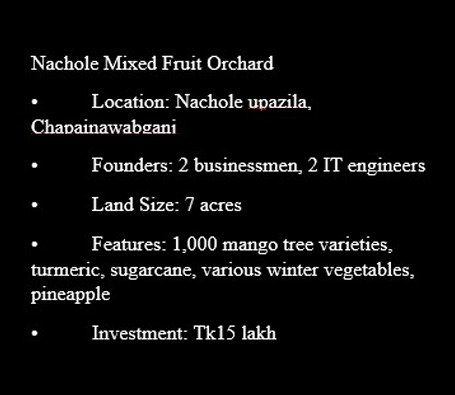Key highlights:
- In recent times, protests by farmers have reverberated across the globe, with Europe and India taking center stage.
- In Poland, angry farmers expressed their discontent by pelting the EU building with eggs.
- While the European Union (EU) and India struggle with their agricultural policies, Bangladesh has shifted its focus towards its youth for farming.
- The EU’s Green Deal, aiming for zero pollution by 2050, adds to farmers’ concerns, as it promotes organic farming and animal welfare improvements, potentially impacting yields and incomes.
In recent times, protests by farmers have reverberated across the globe, with Europe and India taking center stage. Thousands of farmers in Europe have been wielding their tractors as weapons of protest for weeks, voicing their diverse demands. These include affordable costs for fuels and fertilizers, reducing the regulatory burden related to climate change, and curbing cheaper imports from non-EU nations.
In Poland, angry farmers expressed their discontent by pelting the EU building with eggs. Meanwhile, farmers united in solidarity in Belgium, France, Italy, and Germany, blocking roads to their capitals and busy ports using tractors. These farmers are deeply troubled by the escalating production costs and declining profits.
Interestingly, at the same time, farmers have also taken to the streets in India. For over a week, they have been demanding guaranteed fair prices. After four unsuccessful rounds of talks with the government, they are now marching toward Delhi in pursuit of their rights.
While the European Union (EU) and India struggle with their agricultural policies, Bangladesh has shifted its focus towards its youth for farming. Some individuals pursue agricultural careers, eschewing traditional employment paths, while others invest in the sector to diversify their income streams. Their endeavors not only generate employment opportunities but also bolster food security by prioritizing the cultivation of high-yielding, high-value crops through the adoption of modern technologies.
Farmer’s Uprising in EU
In high-income countries like the EU and the US, farming contributes a small fraction to the gross domestic product (less than 2% in the EU and 1% in the US) while employing about 3% of the workforce, a figure that’s gradually declining. Despite this, EU farmers have seen their incomes rise in recent years.
The EU has allocated substantial funds, €2.5 billion ($2.7 billion) since 2014 for crisis-related measures to support farmers, and earmarked up to €270 billion for its agricultural fund for 2023-2027. The Common Agricultural Policy (CAP) consumes a significant portion of the EU budget (31%) and incorporates green requirements in its funding distribution.
However, the distribution of CAP funds heavily favors larger farms, leading to a consolidation of holdings and a decline in the number of farms in the EU. The EU’s Green Deal, aiming for zero pollution by 2050, adds to farmers’ concerns, as it promotes organic farming and animal welfare improvements, potentially impacting yields and incomes. This comes at a time of rising costs, posing challenges for farmers in transferring expenses to consumers amidst a cost-of-living crisis.

What Sparked Protests in India?
In India, as elections approach, Prime Minister Modi closely monitors the issue of money, particularly as it pertains to the ongoing farmer protests. Hundreds of thousands of predominantly Sikh farmers from Punjab and Haryana are protesting against agricultural laws introduced in September last year.
These laws mark significant changes in India’s farming sector, which employs over 50% of the country’s workforce. Despite government claims that the laws aim to modernize agriculture by allowing farmers to sell to private firms, protesters fear losing safety nets and land ownership to corporate interests.
The government’s previous attempts to change agricultural laws faced extensive farmer protests, leading to the retraction of the legislation, but the struggle continues.
Bangladesh’s Youth Call to Action
According to the 2022 census, the current youth population of the country stands at 45.9 million, with agriculture contributing 12% to the GDP. Many young people in the country are reshaping their destinies by venturing into the agricultural sector.
These young graduates are introducing more technological solutions for agriculture, such as various weather forecasting techniques using big data concepts and market demand analysis based on Global Positioning System (GPS) data. Recently, several agriculture-based apps like Krishaker Digital Thikana, Krishaker Janala, Agriculture Information Service, BARI app, and Mrittika have been developed.
An exemplary instance is the agricultural joint-venture “Bipanan Kendra Prakritik Krishi Naongaon”. Situated across 20 acres of land in Badalgachhi and Raninagar upazilas of the district, this eco-friendly farm involves 50 farmers. Within its expanse, a 4.5-acre mango orchard, a one-acre mixed-fruit orchard, and two acres dedicated to various winter vegetables flourish.

Rakibur Haque Sohag, the project’s coordinator, revealed, “We initiated this fully organic agricultural endeavor in 2014. Employing organic fertilizers, we nurture all our fruits and vegetables. Though the farm commenced with a Tk5 lakh investment, it now generates an annual income of around Tk50 lakh, supporting the livelihoods of more than 50 workers.”
In Nachole upazila of Chapainawabganj, 2 businessmen and 2 IT engineers collaborated to establish a mixed fruit orchard with an investment of Tk15 lakh. The 7-acre farm hosts 1,000 mango tree varieties alongside intercrops such as turmeric, sugarcane, various winter vegetables, and pineapple.
Another remarkable success story in the agriculture sector is Sunmoon Agro and Fisheries, located in South Chattogram. Originating in 2020 with a Tk7 lakh investment, the project’s total capital has now reached Tk50 lakh. Currently, the farm’s annual turnover exceeds Tk1 crore.
Across continents, farmers are mobilizing to voice their concerns about rising costs, dwindling profits, and changes in agricultural policies that affect their livelihoods.

In contrast, Bangladesh’s youth are embracing agriculture with innovative approaches, leveraging technology and collaboration to drive sustainable farming practices and economic growth.


